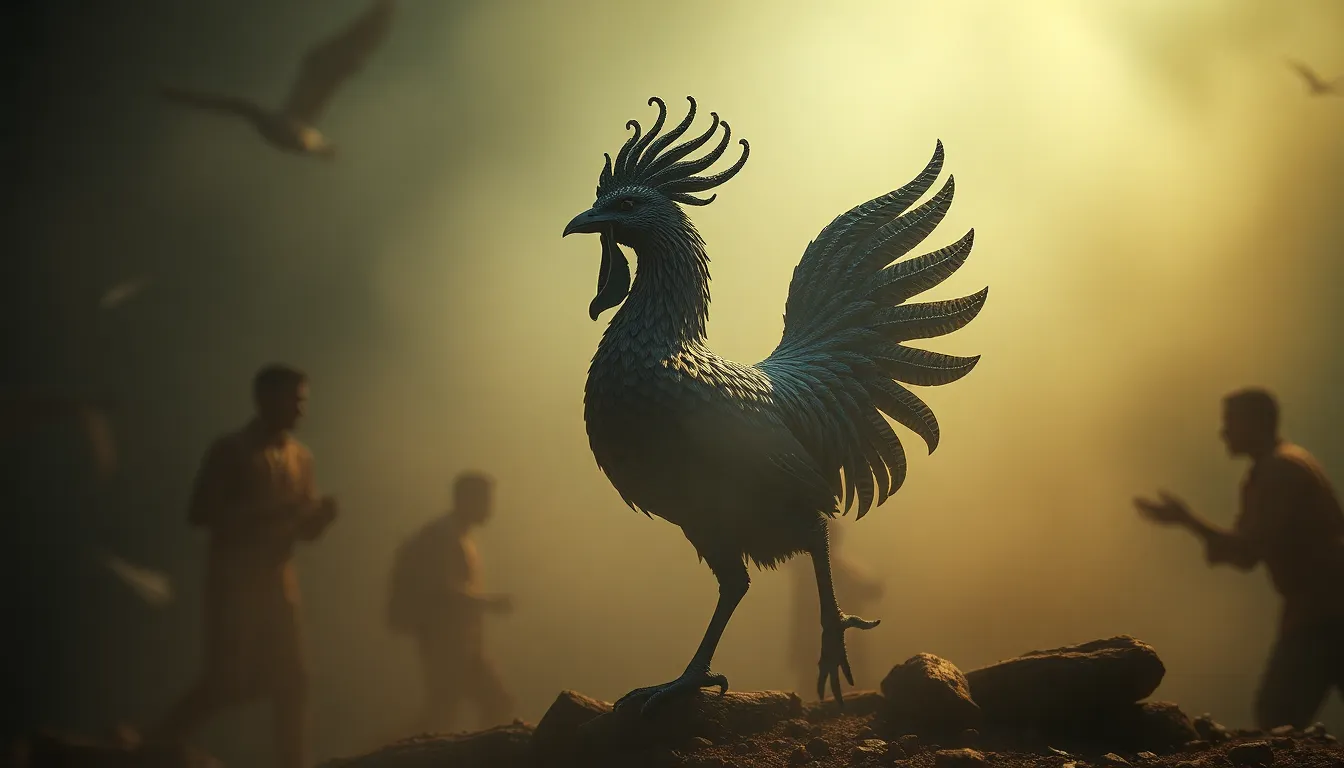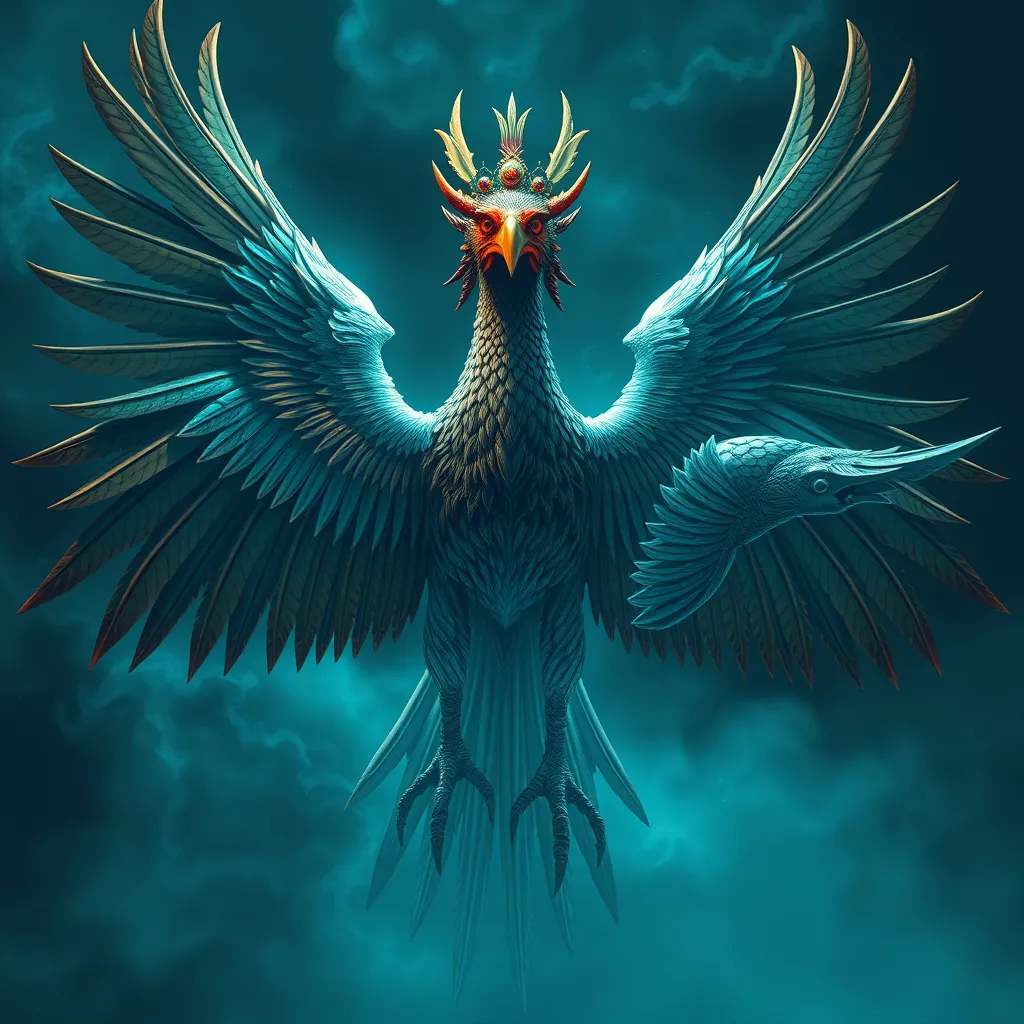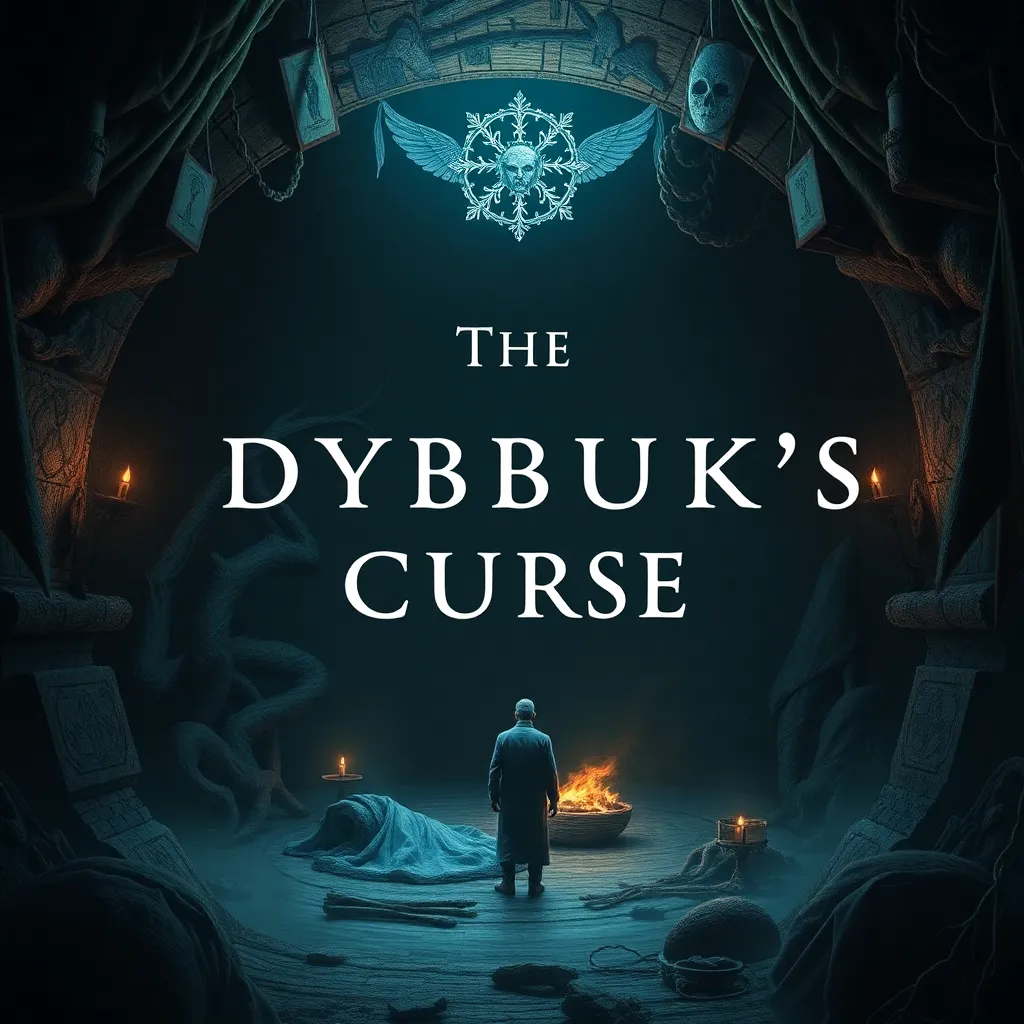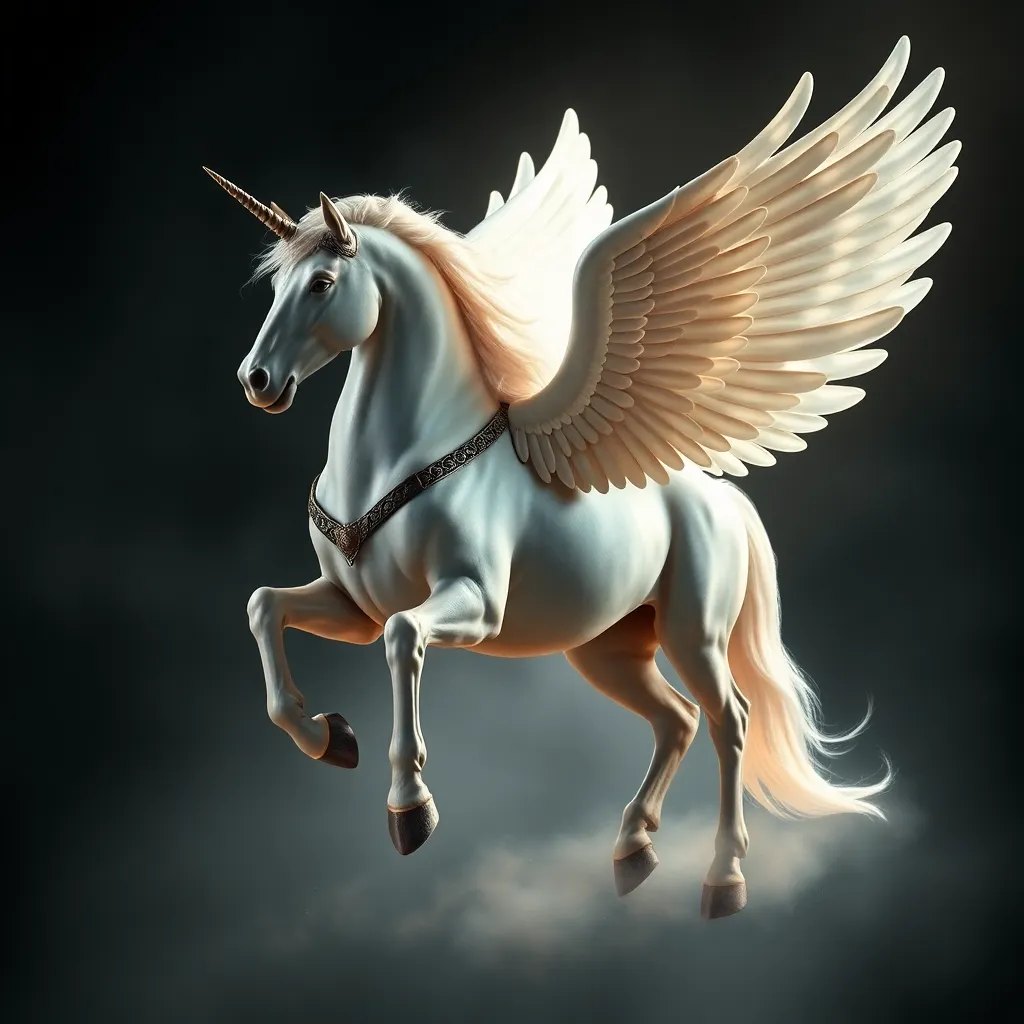The Simurgh as a Symbol of Renewal: Exploring its Role in Ritual and Ceremony
I. Introduction
The Simurgh is a magnificent bird found in the rich tapestry of Persian mythology, often regarded as a symbol of wisdom, strength, and renewal. As a creature that transcends earthly existence, the Simurgh embodies the essence of life cycles, rebirth, and spiritual transformation.
In various cultural and spiritual contexts, the theme of renewal holds paramount importance. It represents the cyclical nature of life, death, and rebirth, illustrating the potential for regeneration and new beginnings. Through the lens of Persian mythology, the Simurgh serves as a powerful emblem of this concept.
This article aims to delve into the role of the Simurgh in rituals and ceremonies, exploring its mythological background, its significance in the notion of renewal within Persian culture, and how it manifests in both historical and contemporary practices.
II. The Mythological Background of the Simurgh
A. Description of the Simurgh and its characteristics
The Simurgh is often depicted as a large, majestic bird resembling a peacock or a griffin, possessing the ability to fly to great heights and having a long lifespan. Its feathers are described as radiant and colorful, symbolizing the beauty and diversity of life. The Simurgh is also said to have a nurturing nature, often associated with motherhood and protection.
B. Historical origins and evolution of the Simurgh in Persian literature
The origins of the Simurgh can be traced back to ancient Persian texts, where it appears in Zoroastrian mythology. Over time, its narrative evolved, most notably in the epic poem “Shahnameh” by Ferdowsi, where it plays a crucial role in guiding and assisting the hero, Zal. The evolution of the Simurgh reflects the changing cultural contexts and values throughout Persian history.
C. Symbolism of the Simurgh in various myths and tales
The Simurgh is often seen as a symbol of divine wisdom and spiritual enlightenment. In various myths, it represents the connection between the earthly realm and the divine, serving as a messenger between humans and higher powers. Its ability to resurrect and regenerate ties it closely to themes of renewal, making it a pivotal figure in many Persian tales.
III. The Concept of Renewal in Persian Culture
A. Definition and significance of renewal in Persian traditions
In Persian culture, renewal is a multifaceted concept encompassing personal, spiritual, and communal rejuvenation. It signifies the opportunity for growth, transformation, and the breaking of old patterns. Renewal is celebrated in various forms, from seasonal festivities to personal milestones.
B. Connections between renewal and the natural cycles of life
The natural world serves as a canvas for understanding renewal in Persian traditions. The changing seasons, agricultural cycles, and the cyclical nature of life and death all underscore the importance of renewal. These cycles are often mirrored in the rituals and ceremonies that honor the interconnectedness of life.
C. The role of mythological creatures in representing renewal
Mythological creatures like the Simurgh play a significant role in embodying the concept of renewal within Persian culture. They serve as metaphors for transformation and rebirth, illustrating the potential for change and the hope that accompanies new beginnings. The presence of these creatures in rituals reinforces their significance in the cultural psyche.
IV. The Simurgh’s Role in Ritual Practices
A. Overview of rituals that incorporate the Simurgh
Rituals incorporating the Simurgh often center around themes of healing, purification, and regeneration. These rituals may include:
- Spring Equinox celebrations (Nowruz)
- Life passage ceremonies (birth, marriage, and death)
- Community gatherings for blessings and renewal
B. Analysis of symbolic actions and their meanings
In rituals featuring the Simurgh, symbolic actions often reflect the bird’s attributes of protection and guidance. For example, participants may engage in:
- Lighting candles to symbolize enlightenment and new beginnings
- Offering prayers for healing and protection
- Creating art or crafts that depict the Simurgh as a symbol of hope
C. Case studies: specific ceremonies featuring the Simurgh
One notable ceremony is the Nowruz festival, which marks the Persian New Year. During this celebration, the Simurgh is invoked as a symbol of renewal, with participants engaging in various rituals to cleanse their spirits and welcome new opportunities. Another example is the ritual of “Chaharshanbe Suri,” where the fire symbolizes purification, paralleling the transformative qualities of the Simurgh.
V. The Simurgh in Literature and Art
A. Depictions of the Simurgh in Persian poetry and literature
The Simurgh has inspired countless works of Persian poetry and literature. Poets like Rumi and Attar have used the Simurgh as a representation of the soul’s journey toward enlightenment and unity with the divine. In Attar’s “Conference of the Birds,” the Simurgh serves as a central figure in the quest for self-discovery and spiritual awakening.
B. Artistic representations of the Simurgh in Persian art
In Persian art, the Simurgh is often depicted in intricate miniature paintings, textiles, and ceramics. These artistic representations capture the bird’s beauty and grandeur, emphasizing its role as a symbol of renewal and transformation. The vibrant colors and elaborate designs reflect the cultural significance of the Simurgh in Persian society.
C. The influence of the Simurgh on contemporary interpretations of renewal
Today, the Simurgh continues to inspire contemporary artists and writers, who reinterpret its symbolism in modern contexts. The themes of renewal and rebirth resonate with global audiences, making the Simurgh a timeless figure in the exploration of human experience.
VI. The Simurgh and Modern Spiritual Practices
A. Adaptations of the Simurgh in contemporary rituals
In modern spiritual practices, the Simurgh has been adapted to fit various contexts, symbolizing personal growth and transformation. New Age movements often incorporate the imagery of the Simurgh in meditative practices and spiritual workshops, emphasizing its role as a guide in the journey of self-discovery.
B. The relevance of the Simurgh in modern spiritual movements
The Simurgh’s significance resonates with contemporary seekers who aspire to achieve spiritual renewal. Its attributes of wisdom and protection offer comfort and inspiration, making it a relevant symbol in today’s fast-paced world.
C. Personal narratives: individuals’ experiences with the Simurgh in rituals
Many individuals share personal stories of how invoking the Simurgh in rituals has facilitated their journey toward healing and renewal. These narratives often highlight the transformative power of the Simurgh, illustrating its enduring legacy in the lives of modern practitioners.
VII. Comparative Analysis: The Simurgh and Other Renewal Symbols
A. Comparison with other mythical creatures representing renewal in different cultures
The Simurgh can be compared to other mythical creatures symbolizing renewal, such as the Phoenix in Greek mythology and the Dragon in Chinese culture. Each of these creatures embodies themes of rebirth and transformation within their respective cultural narratives.
B. The universal themes of rebirth and transformation
Across cultures, the themes of rebirth and transformation are universal, reflecting humanity’s desire for growth and renewal. These shared narratives highlight the interconnectedness of mythological symbols and their significance in human experience.
C. Lessons learned from the Simurgh in the broader context of global mythology
The lessons derived from the Simurgh’s journey resonate with those found in global mythology, emphasizing the importance of resilience, hope, and the cyclical nature of existence. These teachings remind us of the potential for renewal in our own lives.
VIII. Conclusion
In summary, the Simurgh occupies a central role as a symbol of renewal in Persian mythology, embodying themes of transformation and spiritual growth. Its significance in rituals and ceremonies reflects the enduring human quest for regeneration and new beginnings.
The legacy of the Simurgh continues to inspire contemporary practices, highlighting the importance of symbols in understanding cultural renewal. As we navigate the complexities of modern life, the essence of the Simurgh serves as a reminder of the beauty and potential of renewal in our own journeys.



